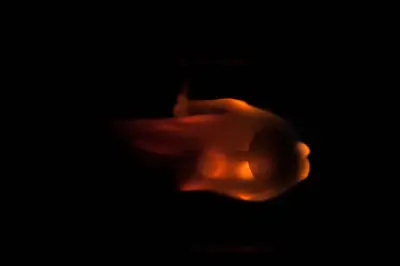To make sure that future spacecraft don’t run the risk of catching fire on the way to the Moon, NASA is conducting a series of Spacecraft Fire Safety Experiments (SAFFIRE) experiments on board a used cargo spacecraft.
This latest SAFFIRE experiment was a bit different from the four preceding it. This time, NASA set several fires in an oxygen-rich atmosphere to simulate the conditions that astronauts would experience during NASA’s upcoming Artemis missions to the Moon. And yes, the experiments involve igniting actual, controlled fires on the interior of the uncrewed spacecraft, as seen in a video uploaded by the space agency.
The latest experiment, conducted on January 13, was the fifth of NASA’s SAFFIRE experiments. During the experiment, robotic equipment ignited several fires inside a Cygnus cargo spacecraft built by Northrop Grumman.
The spacecraft departed the International Space Station on January 6 after delivering supplies. A week later, NASA set the inside on fire. There’s no better place to test out next-gen fire suppression equipment and fireproof materials — and of course study the way fire behaves in microgravity — since these cargo spacecraft are destined to burn up upon re-entry through the Earth’s atmosphere anyway.
“The elevated oxygen levels show more energetic flames, which would have a larger impact on the vehicle,” Gary Ruff, SAFFIRE project manager at NASA, said in a statement. “The Saffire-V data will allow us to model fire scenarios and increase our confidence in safety strategies.” ZIN Technologies was acquired by Voyager Space in March 2023.
